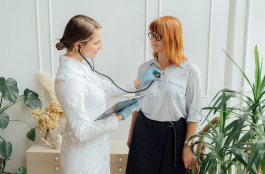Vein disease is one of the most common ailments in the United States. Varicose veins, for example, impact about 1 in 3 adults.
Raeann C. Fultz,
CERTIFIED PHYSICIAN ASSOCIATE
Raeann Fultz is a board-certified physician associate who is passionate about helping our patients become the best versions of themselves. Raeann utilizes her passion for medicine to provide complete and competent care, whether it’s for vein treatment or aesthetic care. She is a firm believer that a trusting relationship is the heart of patient care, and that being able to build this connection with her patients allows for better shared decision making regarding the best plan of care.
Raeann earned her undergraduate degree at Georgetown College and her medical school degree at University of the Cumberlands.

Vein Disease FAQs
The difference between a vein and artery is very straightforward. Arteries carry oxygenated blood away from the heart, and veins carry low-oxygen blood back to the heart. Veins are also called blood vessels.
Yes, vein treatments are safe; they do remove the veins that aren’t working properly. The human body is equipped with more than enough veins to move blood around, not to mention our bodies’ amazing ability to adapt. When the ineffective veins are destroyed, your healthy veins make up the difference without skipping a beat.
Both spider veins and varicose veins result from vein disease. Varicose veins are raised, swollen vessels that twist and coil beneath your skin, giving a bulging, ropey appearance. Spider veins are actually a smaller vein than what most consider “varicose veins.” Varicose veins are simply larger veins just below the skin surface and coil beneath. Spider veins are smaller versions and usually are single veins, but can also cluster.
End Your Struggle With Vein Disease
You deserve compassionate, effective vein treatment in Venice.



